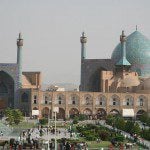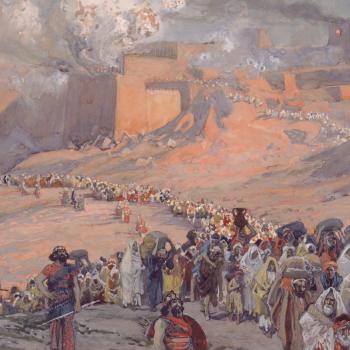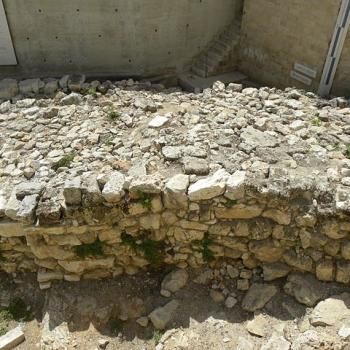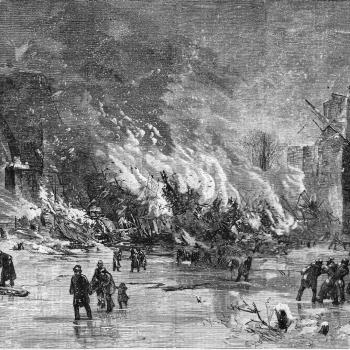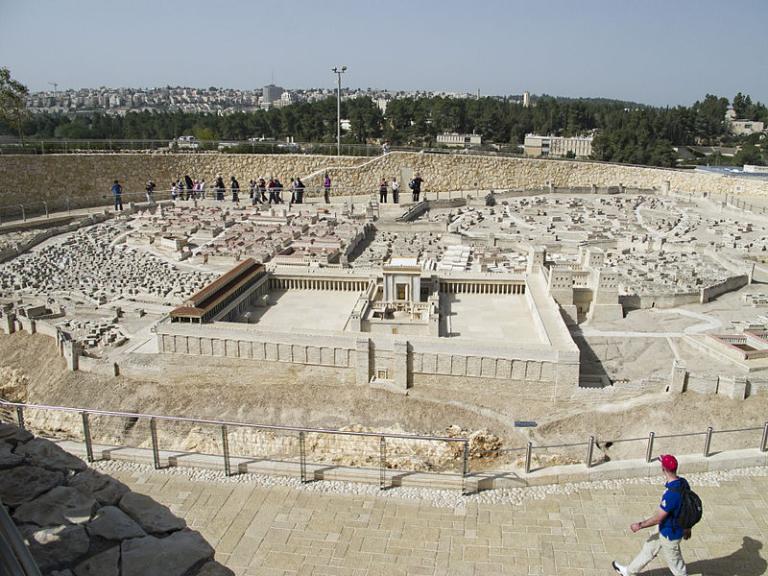
(Public domain photo from Wikimedia Commons)
Furthermore, the ruling classes of Jewry, including the chief families of hereditary priests, had perished along with the temple and the state they had served. Roman administrators were busily monitoring, harrassing, and persecuting descendants of the Davidic line, including the leaders of the Sanhedrin, in order to prevent them from serving as the nucleus of any new revolt. The prophets were long gone. Only the rabbis were left to become the leaders of a new Torah-centered Judaism. And, of course, since the Torah was their specialty and since their knowledge of it was the source of their authority, they were uniquely qualified to take over. Jewish tradition records that the great rabbi Yohanan (or Johanan) ben Zakkai, deputy head of the Sanhedrin, was smuggled out of the city of Jerusalem in a coffin just before it fell to the Romans in 70 A.D., not for fear of the besieging armies but because his fellow Jews, the Zealots, were guarding all exits to prevent anybody from escaping the doomed city. Rabbi Yohanan, a priest and a Pharisee, was a realist. He favored peace and rejected fanaticism. He had opposed the revolt and, in fact, had long felt that Judaism would actually do better without the corruption and the distraction that seemed necessary accompaniments to a Jewish state. Thus, when the state disappeared, he was spiritually and intellectually prepared to go on and, more importantly, to help his people to go on.
Rabbi Yohanan sought and received permission from the victorious Roman authorities to set up a Jewish religious center at Yavneh (also Jabneh, or even Jamnia), to the west of Jerusalem. There, with the Jewish state gone and its traditional leadership destroyed, an assembly of rabbis met and, still under the title of “Sanhedrin,” set about to answer the questions that arose among Jews as a result of the radically new conditions in which they found themselves. There were many of these questions. Jews had been accustomed to praying toward the temple, for example.[1] Now, with it gone, where should they pray? The Sanhedrin had always met within the temple precincts. How could it function now? The tithes and dues and offerings that were so important to Jewish practice were almost all tied up with Jerusalem and the temple. What now? Could Passover still be celebrated with the sacrificial lamb? These questions had to be answered, and in order to do so, the rabbis had to create or discover new resources among the treasures of their ancient heritage. Rabbi Johanan and his associates took decisive steps in this direction. To his disciples and to the Jewish people in general, who were dismayed by the fall of the temple and who wondered where the sins of Israel could now find atonement, he taught: “My son, do not distress yourself, we have another atonement that is like it; and what is it? Charity: `For charity I desire, not sacrifice.”‘[2]
It was under Johanan ben Zakkai that the process of canonizing the Psalms and the so-called “wisdom books” of the Hebrew Bible was completed. Previously, while all Jews had agreed to accept the so-called “five books of Moses,” the Pentateuch, some—notably the Sadducees—had refused to recognize the other books of our Old Testament as canonical. It’s noteworthy, in fact, that the old sectarian divisions among Jews—between Zealots, Essenes, Sadducees, various schools of Pharisees, and the like—virtually disappeared. Only rabbinic Judaism survived, focused intensely on the Law and sustained by a consensus among Jews that this, and this alone, was or should be the true center of a pious Jewish life for both the individual and the community. As time passed, the new Sanhedrin at Yavneh took on most of the functions of the old one that had operated when the temple was still in place. The Sanhedrin became the executive body within Jewish community life, as well as the interpreter of the Law and an academy for training new generations in the intricacies of the Torah.
[1] This practice was attested in Daniel’s day (Daniel 6:10).
[2] Cited by Shmuel Safrai, in H. H. Ben-Sasson, A History of the Jewish People (Cambridge: Harvard University Press, 1976), 321. Rabbi Yohanan is himself citing the great statement of Hosea 6:6.
Posted from Park City, Utah



